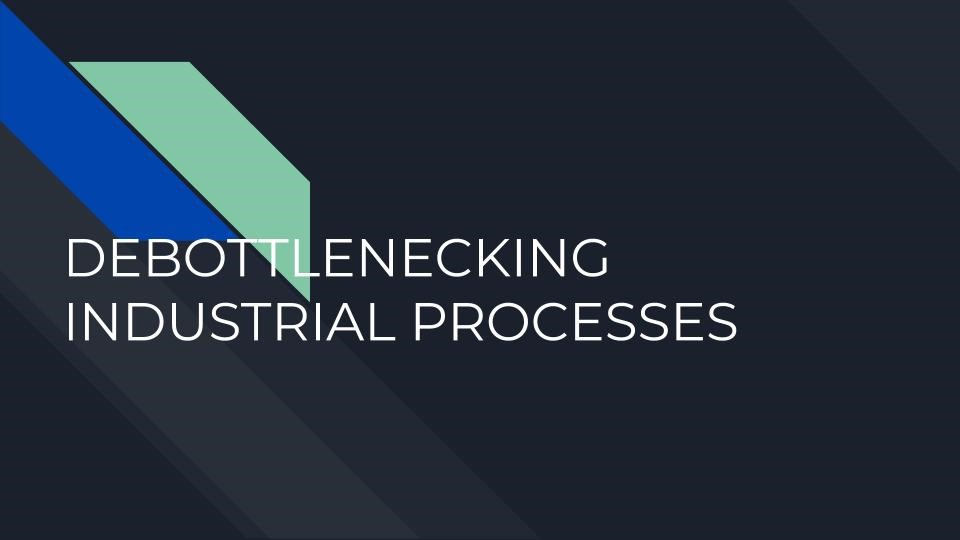
“Consistent alignment of capabilities and internal processes with the customer value proposition is the core of any strategy execution.”- Robert S. Kaplan
Industrial operating processes are very complex systems that often require restructuring. For various reasons, a current operating mode might not work for an organization. It may be that the operational flow requirements have shifted, leading to an increase in demand of a product, or in some instances there may be a reduction in demand of a product or service. Regardless of the problem, there’s often a point at which the process will not be operating at its desired operating point. Whenever there’s a disruption in the process flow, there is a need for the process to be stabilized. This process is known as debottlenecking the production process.
Within various sectors, there is a need for systems to be operating at peak flow. Within the biomanufacturing industry, the industry has identified that it two main issues that affect its operability. These are variability and complexity. Utilizing this industry as the baseline for this case study, we can go through the process that the industry has taken in order to ensure that it is satisfying its customers.
VARIABILITY:
The variability challenge for organizations involves understanding the existing process and its demands. Variability is a demand based function, which is dependent on how the organization is aligned with its customers. Is the demand seasonal? If so, when are the peaks and the troughs in the operation?
COMPLEXITY:
The pharmaceutical industry is one that is constantly in a state of developing products and services. Manufacturing drug A requires process A, while developing drug B requires process B. Looking at all of this, you’ll see that some aspects of the operations are actually complex and batch process engineering based. This means that not all processes will require the same units to produce the various process products. That being the case, it will be important for an organization to ensure that all the critical elements and particularly shared resource units are properly streamlined.
WHAT HAPPENS WHEN THERE’S A DEMAND SHIFT?
Usually, with an increased demand for a product or service in a facility such as a biomanufacturing facility, the increased throughput may start putting a strain on the existing systems. To combat such strains, the organization will have to go through the process of debottlenecking their operations. Debottlenecking as a process, will require a systems analysis, and a series of process models to identify the best way to reallocate the system process flows.
As new possibilities for unit and resource allocation is modelled, the operations management teams will be able to identify if the current unit operations will be adequate, or if there will be a need for additional resources. Process operations have a limited capacity, and once the operational crew knows exactly how their process operates, they’ll be in a better position to determine what their peak operational flows will be.
An Appropriate Implementation Plan
It is quite possible to have the right plan, but there be challenges along the way of implementation. During a debottlenecking project it will be important for the plan to be realistic and detailed, and well managed along the implementation process. High level project management will be important, as well as the detailed tracking of the process as the plan is being implemented. Many organizations have challenges with this phase of the debottlenecking process. Because so much deliberation is taken in the first instance, once the implementation phases arrive, there is often a loss of steam and the ambitious plan can be missed. With the right motivated personnel, the process management will proceed effortlessly.
The Customization Factor
Continuous processes often are scalable. Debottlenecking is rarely an issue with these systems. The issues come when the system is more custom, such as in the case of batch processes that produce variable products. When custom making anything from a drug to a part, there is always an extra element of time to be factored into the plan. There will often be an element of adjustment and scaling that the process system developers, as well as the project managers will have to factor into the plan as the process is being bottlenecked. Designing the system will take time, as well as implementing and training the persons who will use the system in its optimized state. Many systems are over designed, and employees can be overwhelmed by the various facets of the system such as the user interface, analytical tools etc.
The list of possible challenges can be exhaustive, but the onus is on the organization to ensure that it has a plan that is suited to its own operations.
